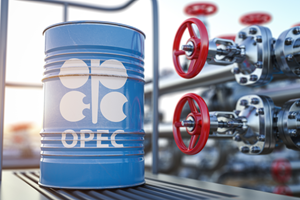OPEC+ reopens “fierce” debate over members’ oil production capacity
(Bloomberg) – OPEC+ is once again grappling with the thorny question of how much oil its members are actually capable of pumping, an issue that poses risks for the group’s efforts to stabilize world markets.
After a fierce debate on the matter last year — ultimately leading to the exit of Angola — the alliance led by Saudi Arabia commissioned an external review of its members capabilities, to be concluded by the end of June. Several major exporters are seeking to have their levels upgraded, with a view to securing the right to pump more crude in 2025.
The United Arab Emirates, Kazakhstan, Iraq, Kuwait and Algeria are among countries who’s potential to pump more next year is under scrutiny, according to people familiar with the discussions who asked not to be identified because the information isn’t public. Some have pushed for an upward revision, causing tough talks with the outside consultants that are judging the matter, they said.
OPEC and its partners have been restraining oil production in a bid to stave off a surplus and shore up crude prices. JPMorgan Chase & Co. warns that the group — which already holds considerable idle capacity — could struggle to manage markets next year, when demand growth is set to slow and rival supplies to climb.
The 22-nation alliance is widely expected to prolong its current production curbs into the second half of this year when it gathers on June 1. It may also use the gathering to discuss the capacity review, according to UBS Group AG.
Whether that debate could impinge on the decision at the meeting, as it has done in the past, is unclear.
The UAE has long been at the center of questions about production capacity, and a clash with the Saudis on the issue three years ago nearly shattered the 22-nation alliance. Riyadh has often urged OPEC+ to be cautious in adding barrels to the market.
This time, the UAE is once again seeking a higher figure, according to people familiar with the matter. State oil giant Abu Dhabi National Oil Co. said on its website earlier this month that it’s capable of pumping 4.85 MMbpd — almost a third higher than the last assessment of its capacity by OPEC.
“The UAE is very keen to raise production sooner and is arguably much better prepared to live with lower oil prices,” said James Swanston, Middle East and North Africa economist at Capital Economics. “It’s likely that those old wounds between the UAE and the rest of the group open up again.”
In Kazakhstan, a major development led by Chevron Corp. at the Tengiz oil field is due for completion in the second quarter of next year. The expansion, which comes with a projected cost of about $48.5 billion, will boost production capacity at the field by 260,000 bpd.
Kazakhstan has not applied to OPEC with a request related to its production capacity, the press office for the country’s Energy Ministry said in a statement.
Iraq has publicly stated that it has the ability to produce more than OPEC credits.
“Iraq has not taken its real quota of crude oil production — Iraq can now produce more than 5.5 MMbpd,” Oil Minister Hayyan Abdul Ghani told Asharq in a television interview last week. That compares with OPEC’s last assessment of 4.8 MMbbl.
Like Kazakhstan, Baghdad has been flouting its output quota this year. Iraq is pumping nearly 4.2 MMbpd, or about 200,000 bpd above its agreed limit.
Heated discussions. The capacity audit is being conducted by three energy consultants regularly used by the Organization of Petroleum Exporting Countries: S&P Global’s IHS Markit, Wood Mackenzie Ltd. and Rystad Energy. The trio are holding discussions with individual members, and have been asked to submit their assessments to OPEC’s Vienna-based secretariat this week.
In some respects, their review could be considered academic. Many OPEC+ countries aren’t currently able to produce at their stated capacity levels as they struggle with inadequate investment and operational disruptions.
Despite its claims to much greater potential, Iraq has had several hundred thousand barrels a day of capacity shuttered since early last year when an export pipeline was halted due to a dispute with neighboring Turkey.
Nonetheless, the discussions have become quite heated as countries are eager to secure the highest possible target levels for next year, when their ability to pump may have improved, according to people involved in the talks.
And discord within the group can affect crude prices, which are hovering near $83 a barrel as robust fuel demand and fears over Middle East conflict mingle with a shaky economic outlook and abundant U.S. production.



